
 |
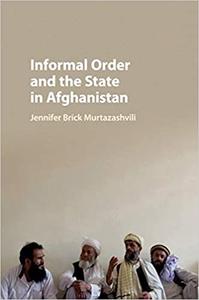 Jennifer Brick Murtazashvili, "Informal Order and the State in Afghanistan" English | ISBN: 1107534585 | 2018 | 363 pages | PDF | 3 MB Despite vast efforts to build the state, profound political order in rural Afghanistan is maintained by self-governing, customary organizations. Informal Order and the State in Afghanistan explores the rules governing these organizations to explain why they can provide public goods. Instead of withering during decades of conflict, customary authority adapted to become more responsive and deliberative. Drawing on hundreds of interviews and observations from dozens of villages across Afghanistan, and statistical analysis of nationally representative surveys, Jennifer Brick Murtazashvili demonstrates that such authority enhances citizen support for democracy, enabling the rule of law by providing citizens with a bulwark of defence against predatory state officials. Contrary to conventional wisdom, it shows that 'traditional' order does not impede the development of the state because even the most independent-minded communities see a need for a central government - but question its effectiveness when it attempts to rule them directly and without substantive consultation. 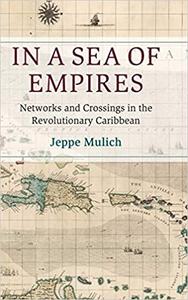 Jeppe Mulich, "In a Sea of Empires: Networks and Crossings in the Revolutionary Caribbean " English | ISBN: 1108489729 | 2020 | 300 pages | PDF | 6 MB At the turn of the nineteenth century, the Caribbean was rife with revolutionary fervor and political turmoil. Yet, with such upheaval came unparalleled opportunities. In this innovative and richly detailed study, Jeppe Mulich explores the interconnected nature of imperial politics and colonial law in the maritime borderlands of the Leeward Islands, where British, Danish, Dutch, French, Spanish, and Swedish colonies both competed and cooperated with one another. By exploring the transnational networks involved in trade, slavery, smuggling, privateering, and marronage, he offers a new account of the age of revolutions in the Caribbean, emphasizing the border-crossing nature of life in the region. By approaching major shifts in politics, economy, and law from the bottom-up, a new story of early nineteenth-century globalization emerges - one that emphasizes regional integration and a multiplicity of intersecting networks. 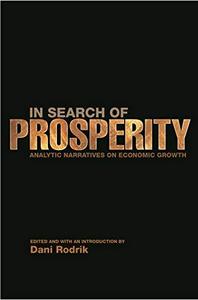 In Search of Prosperity: Analytic Narratives on Economic Growth By Dani Rodrik 2003 | 520 Pages | ISBN: 0691092699 | PDF | 3 MB The economics of growth has come a long way since it regained center stage for economists in the mid-1980s. Here for the first time is a series of country studies guided by that research. The thirteen essays, by leading economists, shed light on some of the most important growth puzzles of our time. How did China grow so rapidly despite the absence of full-fledged private property rights? What happened in India after the early 1980s to more than double its growth rate? How did Botswana and Mauritius avoid the problems that other countries in sub--Saharan Africa succumbed to? How did Indonesia manage to grow over three decades despite weak institutions and distorted microeconomic policies and why did it suffer such a collapse after 1997?What emerges from this collective effort is a deeper understanding of the centrality of institutions. Economies that have performed well over the long term owe their success not to geography or trade, but to institutions that have generated market-oriented incentives, protected property rights, and enabled stability. However, these narratives warn against a cookie-cutter approach to institution building.The contributors are Daron Acemoglu, Maite Careaga, Gregory Clark, J. Bradford DeLong, Georges de Menil, William Easterly, Ricardo Hausmann, Simon Johnson, Daniel Kaufmann, Massimo Mastruzzi, Ian W. McLean, Lant Pritchett, Yingyi Qian, James A. Robinson, Devesh Roy, Arvind Subramanian, Alan M. Taylor, Jonathan Temple, Barry R. Weingast, Susan Wolcott, and Diego Zavaleta. 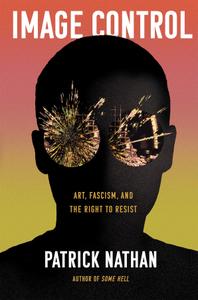 Image Control: Art, Fascism, and the Right to Resist by Patrick Nathan English | August 17th, 2021 | ISBN: 1640094539 | 240 pages | True EPUB | 2.98 MB Susan Sontag meets Hanif Adburraqib in this fascinating exploration of the unexpected connections between how we consume images and the insidious nature of Fascism
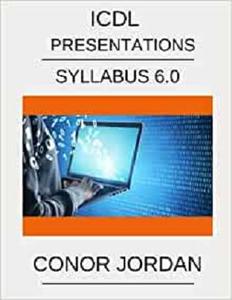 ICDL PowerPoint: A step-by-step guide to Presentation Software using Microsoft PowerPoint by Conor Jordan English | January 1, 2021 | ISBN: N/A | ASIN: B08S2LL1P4 | 86 pages | EPUB | 1.73 Mb Learn how to use Microsoft PowerPoint with this step by step guide. With clear instructions, detailed illustrations and reviews after each section, prepare for the ICDL exam with this useful handbook.Learn how to:
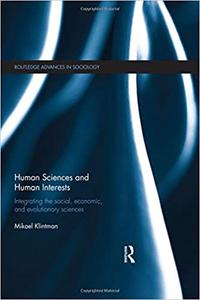 Mikael Klintman, "Human Sciences and Human Interests: Integrating the Social, Economic, and Evolutionary Sciences " English | ISBN: 1138897981 | 2016 | 214 pages | PDF | 3 MB Within the disciplines of social, economic, and evolutionary science, a proud ignorance can often be found of the other areas' approaches. This text provides a novel intellectual basis for breaking this trend. Certainly, Human Sciences and Human Interests aspires to open a broad debate about what scholars in the different human sciences assume, imply or explicitly claim with regard to human interests.
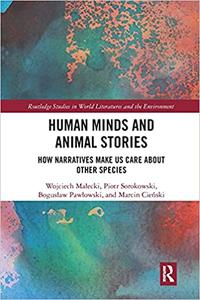 Wojciech Małecki, "Human Minds and Animal Stories: How Narratives Make Us Care About Other Species " English | ISBN: 0367661969 | 2020 | 200 pages | PDF | 4 MB The power of stories to raise our concern for animals has been postulated throughout history by countless scholars, activists, and writers, including such greats as Thomas Hardy and Leo Tolstoy. This is the first book to investigate that power and explain the psychological and cultural mechanisms behind it. It does so by presenting the results of an experimental project that involved thousands of participants, texts representing various genres and national literatures, and the cooperation of an internationally-acclaimed bestselling author. Combining psychological research with insights from animal studies, ecocriticism and other fields in the environmental humanities, the book not only provides evidence that animal stories can make us care for other species, but also shows that their effects are more complex and fascinating than we have ever thought. In this way, the book makes a groundbreaking contribution to the study of relations between literature and the nonhuman world as well as to the study of how literature changes our minds and society.
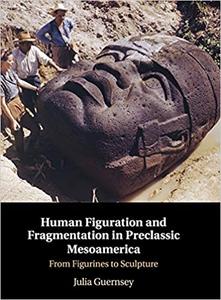 Julia Guernsey, "Human Figuration and Fragmentation in Preclassic Mesoamerica: From Figurines to Sculpture" English | ISBN: 1108478999 | 2020 | 278 pages | PDF | 29 MB In this book, Julia Guernsey examines the relationship between human figuration, fragmentation, bodily divisibility, personhood, and community in ancient Mesoamerica. Contending that representation of the human body in the pre-classic period gradually became a privileged act, she argues that human figuration as well as the fragmentation of both human representations and human bodies reveals ancient conceptualizations of personhood and the relationship of individual to the community. Considering ceramic figurines and stone sculpture together with archaeological data, Guernsey weaves together evidence and ideas drawn from art history, archaeology, and anthropology to construct a rich, cultural history of Mesoamerican practices of figuration and fragmentation. A methodologically innovative study, her book has ramifications for scholars working in Mesoamerica and, more generally, those interested in the significance of human representation.  Nate Lemmon, "How to Easily Grow Organic Superfoods at Home Without a Garden" English | 2012 | ASIN: B008LQ9BXW | 42 pages | EPUB | 0.1 MB What This Special Book Is and Why You Should Read It
 How to Cheaply Monitor and Automate Your Aquaponic/Hydroponic Garden with Arduin by Mr. David C Leithauser English | September 7, 2017 | ISBN: 1975948424 | 228 pages | EPUB | 1.82 Mb Aquaponic and hydroponic systems are growing in popularity. They provide a way to grow your own food, for yourself or for profit. However, they can be very time consuming, and not responding to a problem in time can result in the loss of your fish or plants. If you can monitor your systems better, or even have an automated system that can correct some problems, you can make your system more secure and prosperous. Arduinos are small computers on a circuit board that are very suitable for automating things. Unlike computers that have a keyboard, mouse, and display and are designed to input and output information, Arduinos are designed to observe and control physical objects. You can connect sensors to the Arduino inputs and relays or other devices to the outputs. You can then program the Arduino to perform various output actions based on the input. In this book, I explain ways that you can use Arduinos to monitor or automate your aquaponic or hydroponic garden. By monitor, I mean using it as a test instrument to report on conditions like water level, water and air temperature, pH, total dissolved solids, turbidity (cloudiness), etc. It is possible to sound alarms based on this information, display this information directly on a small screen connected to the Arduino, or even display information on a Web page. By automate, I mean actually act on the information directly. For example, it can monitor water levels and raise or lower water levels as necessary, monitor air or water temperature and turn on heaters or cooling systems, pump the water through a filter if it gets too cloudy, add chemicals to correct imbalances, and so on. I dedicate the first chapter of the book to a description of the very basics of Arduinos for those readers that are totally unfamiliar with them. I will describe what they are, how the set up the basic hardware and software you will need to use them, even where to buy them. In the following chapters, I will show you how to perform specific tasks with the Arduino, like creating timers for flooding and draining your systems that adjust themselves for temperature and humidity, maintaining proper water levels, maintaining proper air and water temperatures, monitoring pH and automatically adding chemicals to balance it when necessary, monitoring and reacting to total dissolved solids, turbidly, and so on. I will provide you with specific, usable code that you can load into the Arduino, and show you how to modify this code to make any adjustments you might need to match it to your system. If you are familiar with Arduinos, you will probably be able to greatly expand in the code I give you to develop very sophisticated systems. If you are not familiar with Arduinos, you will be able to simply install and use the code as-is, changing just a few numbers in the code as I will explain to make it fit your system. I will supply links to where you can download the code to save you typing long programs (called sketches). |